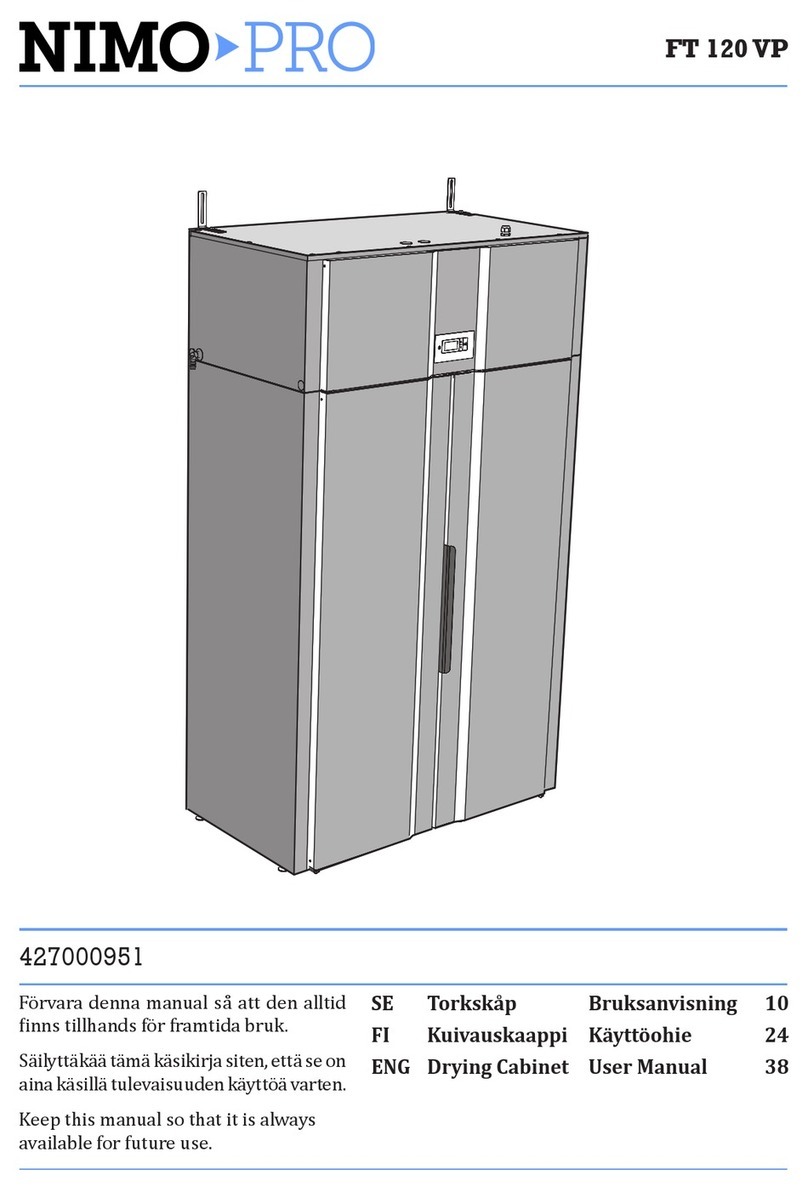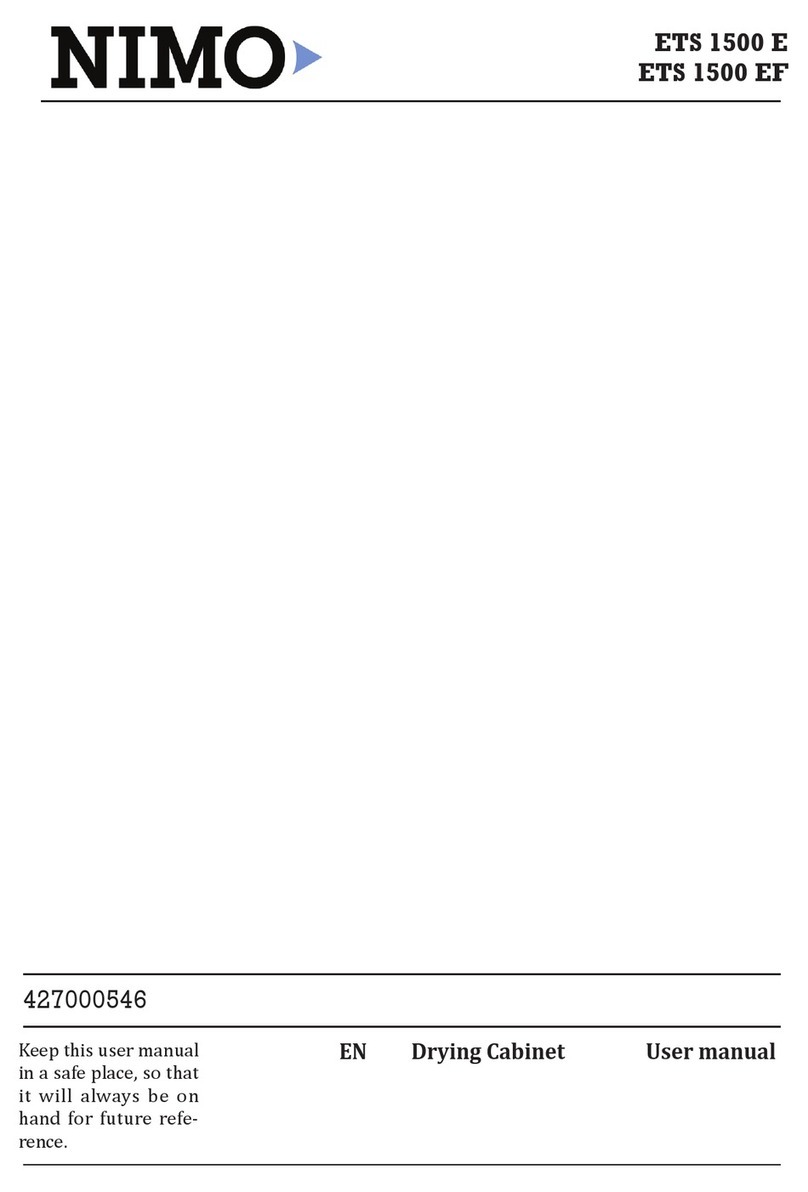5
SAFE USE
This advice on safe use is intended to enable you to avoid incorrect use and to reduce
the risk of unnecessary accidents, and should be read prior to installation and use
of the drying cabinet.
USES
CAUTION! This equipment is only in-
tended to be used to dry fabrics washed
in water.
The drying cabinet can be used by
children aged 8 or over and persons (in-
cluding children) with physical, sensory
or mental impairments, provided they
have received guidance or information
on how to use the drying cabinet safely
and understand the risks that can occur.
Do not allow children to play in or on the
drying cabinet. Keep an eye on children
when they are in the immediate vicinity
of the cabinet.
Cleaning and maintenance must not be
carried out by children without supervi-
sion.
TECHNICAL SAFETY
Check the drying cabinet for visible
damage before installing it. A damaged
drying cabinet must not be used as it may
pose a hazard.
The drying cabinet must only be con-
nected to a grounded socket installed
in accordance with applicable safety
regulations. After installation the wall
socket must be accessible so that the
power supply to the drying cabinet can
be disconnected at any time.
Check that the data on the drying cabi-
net’s data plate (fuse, voltage and fre-
quency) is in agreement with the mains
supply at the place where the cabinet is
installed.
The drying cabinet must not be con-
nected using an extension cable as the
necessary safety cannot be guaranteed
(risk of overheating).
If the mains lead is damaged it must
be immediately replaced, and only by
the manufacturer, the manufacturer’s
service agent or similar qualied persons
to avoid danger.
This drying cabinet meets applicable safety requirements. Incorrect use may, however,
lead to injuries and damage to property.






































